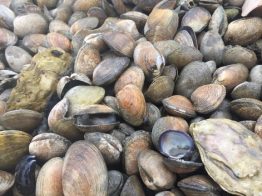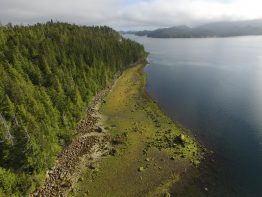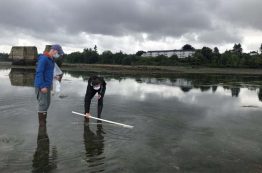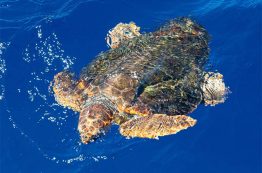Around 50 years ago, Pacific oysters in the Puget Sound started dying at noticeably increasing rates during the summer, causing residents and scientists to wonder why. Researchers in what is now the School of Aquatic and Fishery Sciences investigated many factors that may cause mortalities such as bacteria, reproductive stress related to spawning and changes in other environmental conditions. The evidence collected pointed towards stress on the animals when they spawn, as the Pacific oyster spends a lot of their energy on reproduction.
Read more »Scientists seek to grow the field of eDNA research ‘without squelching creativity’
A new effort at the University of Washington aims to accelerate eDNA research by supporting existing projects and building a network of practitioners to advance the nascent field. Called the eDNA Collaborative, the team is based in the College of the Environment with leadership and program staff from the School of Marine and Environmental Affairs. For about a decade, scientists have honed the craft of using genetic material in the environment — known as eDNA — to detect and monitor organisms for environmental science and conservation.
Read more at UW News »New story map unites sea gardens around the Pacific and shows the importance of revitalizing Indigenous mariculture practices for food sovereignty and resilience
Indigenous people have been stewarding the ocean for thousands of years. This stewardship has appeared in many different forms around the world, all of which represent a reciprocal relationship between humans and the sea rooted in deep, place-based knowledge. From octopus houses in Haida Gwaii to fish ponds in Hawai’i, an Indigenous mariculture renaissance is making waves as groups across the Pacific seek to revitalize these ancient techniques and traditions.
Read more at Washington Sea Grant »eDNA a useful tool for early detection of invasive green crab
European green crabs feast on shellfish, destroy marsh habitats by burrowing in the mud and obliterate valuable seagrass beds. The invasive species also reproduces quickly, making it a nightmare for wildlife managers seeking to control its spread in Washington’s marine waters. Last month, Gov. Jay Inslee issued an emergency order in response to more than 70,000 crabs caught on Lummi Nation land as well as dramatic increases in crab populations on Washington’s outer coast and other locations in Puget Sound in recent years.
Read more at UW News »Shifting ocean closures best way to protect animals from accidental catch
Accidentally trapping sharks, seabirds, marine mammals, sea turtles and other animals in fishing gear is one of the biggest barriers to making fisheries more sustainable around the world. Marine protected areas — sections of the ocean set aside to conserve biodiversity — are used, in part, to reduce the unintentional catch of such animals, among other conservation goals. Many nations are calling for protection of 30% of the world’s oceans by 2030 from some or all types of exploitation, including fishing.
Read more at UW News »





